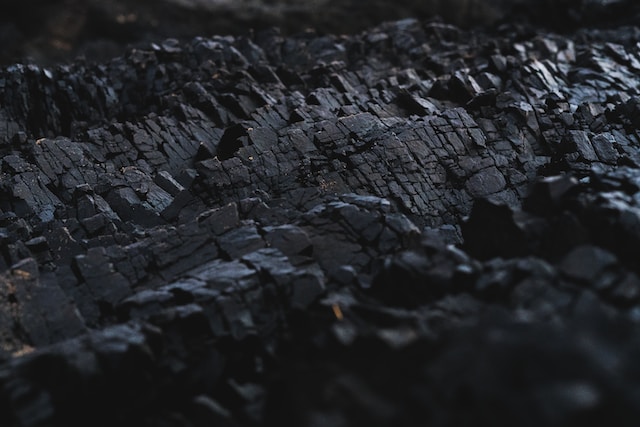Surface coal mining has been a crucial source of energy and economic prosperity for decades. However, this method of extraction leaves behind not only valuable coal resources but also massive quantities of overburden, the material that covers and surrounds coal seams. Once the coal has been removed, the question arises: What happens to the overburden?
This article delves into the intricate process of reclamation, focusing on how overburden is meticulously managed and used to restore the land, demonstrating the mining industry’s commitment to environmental sustainability. The overburden is not simply discarded; it plays a pivotal role in revitalizing the landscape, ensuring a harmonious coexistence between mining activities and the environment.

The Overburden: A Burden No More
-
Initial Removal and Stockpiling
The overburden, which consists of soil, rock, and other materials, is removed and stockpiled at the surface coal mine site during the mining process. This initial separation is a crucial step in ensuring efficient mining operations while preparing for future reclamation.
-
Coal Extraction Process
Surface mining operations, such as strip mining or open-pit mining, are commonly employed for coal extraction. These methods expose coal seams, allowing for efficient removal. The overburden, comprising multiple layers, is sequentially excavated to reach the coal seams.
-
Coal Extraction Efficiency
Modern surface mining techniques are designed to maximize coal extraction while minimizing the impact on the environment. Advanced equipment and technology are used to ensure efficient separation of coal and overburden materials.
Reclamation: The Transformation of Overburden
-
Planning and Permitting
Before any mining activities commence, mining companies are required to develop comprehensive reclamation plans and obtain the necessary permits. These plans detail how overburden will be reclaimed and the land will be restored once mining is complete.
-
Restoring Natural Contours
One of the primary goals of reclamation is to restore the land to its original contours. This process begins by replacing the overburden in layers, carefully considering the land’s natural topography. Proper contouring helps mitigate erosion and facilitates natural drainage patterns.
-
Revegetation and Soil Remediation
A key aspect of overburden reclamation is re-establishing vegetation. Topsoil, which was set aside during mining, is spread across the reclaimed area to provide a fertile base for plant growth. Native plants and grasses are often selected to restore the local ecosystem.
-
Post-Reclamation Monitoring
Reclamation does not end once the overburden is back in place. Extensive monitoring is conducted to ensure the success of reclamation efforts. This includes tracking vegetation growth, water quality, and other environmental indicators. Any necessary adjustments are made to maintain the reclaimed area’s health.
Economic and Environmental Benefits of Overburden Reclamation
-
Land Rehabilitation
Overburden reclamation rejuvenates the land, transforming once-barren mining sites into functional landscapes. Restored land can be repurposed for various uses, such as agriculture, forestry, and wildlife habitats.
-
Economic Opportunities
Reclaimed land can become a valuable asset, generating revenue for landowners and communities. These areas can be used for residential or commercial development, creating jobs and contributing to local economies.
-
Mitigation of Environmental Impact
The meticulous reclamation of overburden helps mitigate the environmental impacts of mining. Restored landscapes contribute to biodiversity conservation, soil preservation, and water quality improvement, thereby promoting overall environmental sustainability.
Challenges and Innovative Solutions
-
Overburden Volume and Disposal
The vast quantities of overburden produced in surface coal mining present a challenge for reclamation. To address this, mining companies often employ techniques such as “backfilling,” where overburden is used to fill in parts of the pit, or “highwall mining,” which extracts coal from the exposed pit walls.
-
Topsoil Management
Maintaining the integrity and fertility of topsoil is critical for successful reclamation. Mining companies take great care in stockpiling topsoil and using it effectively during reclamation.
-
Long-Term Monitoring
Ensuring the sustainability of reclaimed sites requires long-term monitoring and maintenance. Mining companies must commit to ongoing environmental stewardship and financial assurances to cover reclamation and post-reclamation responsibilities.
Regulatory Framework and Oversight
-
Reclamation Regulations
Environmental agencies at the federal and state levels impose strict regulations on mining operations, including detailed reclamation requirements. These regulations aim to ensure that mining activities are conducted with minimal environmental impact and that reclamation is thorough and effective.
-
Enforcement and Oversight
Environmental agencies play a crucial role in enforcing reclamation requirements and monitoring compliance. Violations can result in fines, permit revocations, or legal action, which further incentivizes responsible reclamation.
-
Community and Stakeholder Engagement
Many mining companies actively engage with local communities and stakeholders to address concerns, gather input, and build partnerships that foster responsible mining and reclamation practices.
Case Studies in Successful Overburden Reclamation
-
Black Thunder Mine, Wyoming
Black Thunder Mine, one of the largest coal mines in the United States, has been lauded for its successful reclamation efforts. The mine has restored over 8,500 acres of land, turning it into productive wildlife habitat and grazing land.
-
Germany’s Lusatian Mining Region
Germany’s Lusatian mining region provides a compelling example of effective overburden reclamation. The former mining pits have been transformed into a picturesque landscape of lakes and recreational areas.
The Future of Overburden Reclamation
-
Technological Advancements
The mining industry is continually evolving with advancements in technology. This includes improved methods for overburden handling, land contouring, and vegetation restoration.
-
Sustainability and Renewable Energy Transition
As the world moves toward cleaner energy sources, the demand for coal is expected to decrease. This shift presents an opportunity for the mining industry to repurpose mined areas for renewable energy projects such as solar and wind farms.
-
Public Awareness and Advocacy
Environmental awareness and advocacy groups play a crucial role in holding mining companies accountable and pushing for sustainable mining and reclamation practices.
Conclusion
The reclamation of surface coal mines is a multifaceted process that involves not only the extraction of coal but also the careful management and reintegration of overburden into the environment. Overburden reclamation is not a mere formality; it is a testament to the mining industry’s commitment to environmental sustainability and social responsibility.
Mining companies, in collaboration with regulatory bodies and communities, are continuously striving to improve reclamation practices and reduce the environmental impact of their operations. Successful reclamation efforts have demonstrated that the transformation of overburden into renewed landscapes is not only possible but essential for a sustainable future.
As the mining industry evolves and the world transitions to cleaner energy sources, overburden reclamation will continue to play a crucial role in ensuring that the legacy of surface coal mining is one of environmental restoration and renewed opportunity.





